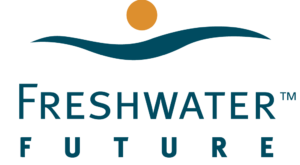Near Zero Health Advisories for PFAS Chemicals Announced by U.S. EPA
For decades, scientific research documented that the family of chemicals called PFAS had harmful health effects. Recently, the U.S. Environmental Protection Agency (U.S. EPA) adopted new health advisories for four specific types of PFAS. The new health advisories are 17,500 times lower for PFOA and 3,500 times lower for PFOS than the U.S. EPA health advisories established in 2016. Unfortunately, these health advisories are non-enforceable and serve only as public health goals. Learn more about actions needed to address these harmful chemicals here.
Court Provides Criteria for Citizens to Have a Say in Zoning Decisions
The Michigan Supreme Court ruled that Saugatuck Dunes Coastal Alliance can appeal a zoning decision for a proposed private marina, canal and development in critical dunes at the mouth of the Kalamazoo River. The ruling clarifies that a voice in zoning decisions is not limited to adjacent property owners but includes community residents meeting certain criteria. Saugatuck Dunes Coastal Alliance believes the project’s proposal to create a 1,600 foot canal violates the zoning ordinance that clearly states, “In No Event shall a canal or channel be excavated for the purpose of increasing the water frontage.”
Need Funds for Your Water Work?
Freshwater Future’s Project Grant deadline of September 30 is fast approaching. This year we are fortunate to have additional funds available, so don’t miss out. Learn more about our Grants Program on Wednesday, August 24 at 12pm (EST). To register online, please click HERE. To register by email or phone, please contact laurie@freshwaterfuture.org, (231) 348-8200. Also, visit our online grants portal to learn more about our funding initiatives and view the interactive grant map!
More Direct Action Required to Reduce Phosphorus Pollution
Polluted runoff into the Great Lakes has significant economic consequences. The economic damage costs on the Canadian side of Lake Erie alone have been estimated at $270 million per year. Agriculture, manufacturing, and wastewater discharges contribute the largest loads of pollution, resulting in more frequent outbreaks of harmful algal blooms (HABs), especially in Lake Erie and Lake Ontario. Researchers at the University of Waterloo’s Water Institute released a hydro-economic model for the Great Lakes Basin that helps identify the least-cost way to reduce phosphorus across economic sectors and lakes. The economic, social and environmental costs of the status quo are far too great. Voluntary best management practices have failed to see a reduction in phosphorus loads to Lake Erie and HABs are increasing in scope and severity. There is a need to accelerate investment and implement more source-targeted actions to ensure that drinking water sources, public health, economic activities such as fishing and tourism, and property values are protected.








